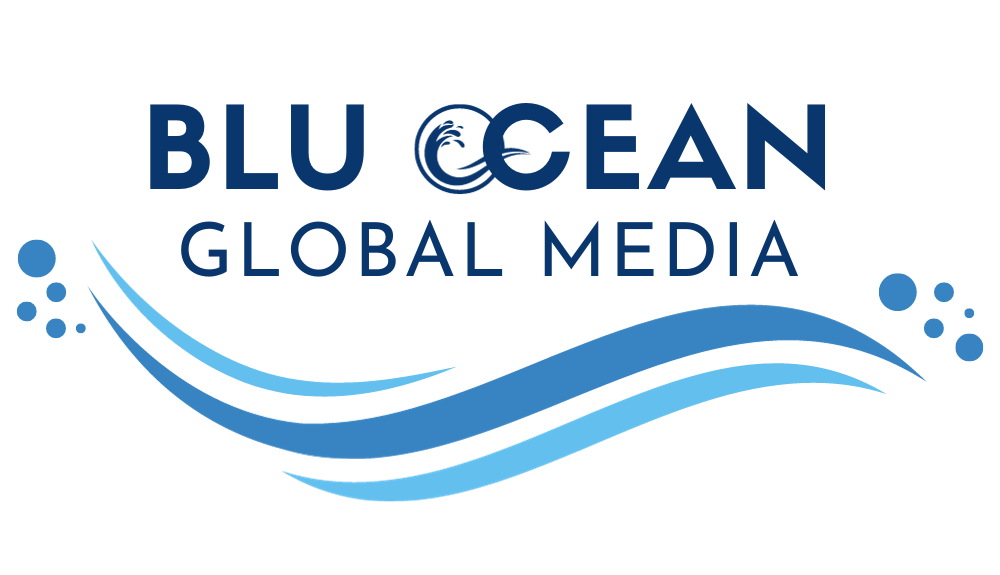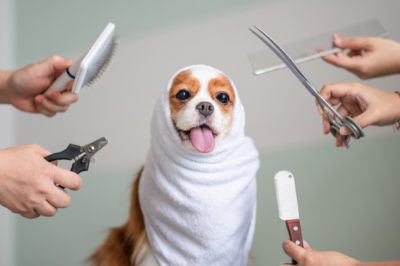
Key Takeaways
- Specific nutrients like vitamins D, B12, and antioxidants may support skin health and pigmentation.
- A balanced, colorful diet rich in fruits and vegetables can be beneficial for those with vitiligo.
- Some evidence suggests that a gluten-free diet could help manage vitiligo symptoms.
- Supplementing with vitamins and minerals should be done with care, considering dosage and timing.
- Always consult with a healthcare provider before starting any new dietary or supplement regimen.

Unlocking the Power of Nutrition in Vitiligo Management
When it comes to vitiligo, an autoimmune condition that causes the loss of skin pigmentation, every little bit of support counts. That’s where nutrition and supplements can play a supportive role. While they’re not a cure-all, they can be part of a comprehensive approach to managing vitiligo.
Why Diet Matters for Your Skin
Think of your skin as a mirror to your overall health, including your dietary habits. The right foods provide nutrients that are crucial for maintaining skin health and potentially supporting the repigmentation process. Therefore, making informed choices about what to put on your plate is a step towards managing vitiligo.
The Superfoods for Supporting Skin Pigmentation

Now, let’s talk about superfoods that are not only delicious but might also be your skin’s best friends. These include:
- Leafy greens: Spinach, kale, and other greens are loaded with vitamins and minerals.
- Berries: Blueberries, strawberries, and raspberries are rich in antioxidants.
- Nuts and seeds: Walnuts, flaxseeds, and chia seeds are excellent sources of omega-3 fatty acids.
These foods are not just tasty; they’re packed with vitamins and minerals that could support skin health. Imagine a smoothie that combines berries with a handful of spinach and a sprinkle of seeds – that’s a skin-loving treat!
Top Vitamins and Supplements for Vitiligo Care
While a nutritious diet is the foundation of good health, sometimes you might need an extra boost. That’s where supplements come in. Let’s dive into the key vitamins and supplements that are often discussed in the context of vitiligo management.
Vitamin D: The Sunshine Nutrient
Vitamin D is often called the ‘sunshine nutrient’ because our body produces it in response to sunlight. It plays a crucial role in skin health and immune function. For individuals with vitiligo, maintaining adequate vitamin D levels is particularly important.
Because vitiligo can make your skin more sensitive to sunlight, it’s a delicate balance to get enough sun exposure for vitamin D without risking skin damage. So, you might consider vitamin D-rich foods like:
- Fatty fish like salmon and mackerel
- Egg yolks
- Fortified foods like milk and orange juice
If you’re not getting enough vitamin D from sunlight or food, a supplement could be helpful. Just remember, more is not always better; it’s essential to find the right dosage for your needs.
Zinc: The Trace Mineral for Skin Repair
Zinc is a trace mineral that’s vital for skin repair and overall immune function. Some studies suggest that people with vitiligo may have lower levels of zinc. By including zinc-rich foods in your diet, like:
- Meat
- Shellfish
- Legumes like chickpeas, lentils, and beans
You’re not just enjoying a tasty meal; you’re also supporting your skin’s needs. If you’re considering a zinc supplement, it’s best to talk with your healthcare provider first.
Vitamin B12: Essential for Nerve and Skin Health
Vitamin B12 is crucial for nerve health and the production of DNA and red blood cells. It’s also been noted that some people with vitiligo may be deficient in this vitamin. To boost your B12 levels, you can turn to:
- Animal products like meat, fish, and dairy
- Fortified cereals
But if you’re vegan or have difficulty absorbing B12, a supplement might be necessary. Just like with other vitamins, the key is the right amount, so check with a professional.
Antioxidants: Free Radical Scavengers for Skin Protection
Antioxidants are your body’s defense against free radicals, which can damage cells and are thought to play a role in vitiligo. Foods high in antioxidants can help protect your skin. These include:
- Vibrant fruits and vegetables
- Green tea
- Dark chocolate (in moderation)
Including these in your diet can give your body the tools it needs to fend off free radical damage. Supplements with antioxidants like vitamin C or E could also be considered, but they’re no substitute for a varied diet.
Creating a Vitiligo-Friendly Diet Plan

Managing vitiligo goes beyond treatment; it’s about creating a lifestyle that supports your skin. A vitiligo-friendly diet is a cornerstone of this lifestyle. So let’s put together a diet plan that not only tastes great but also nourishes your skin.
Identifying Key Nutrition Components
The first step is to identify what your skin needs. We’re looking at nutrients that support skin health, like vitamins, minerals, and antioxidants. These components can help manage oxidative stress, which is believed to be a contributing factor in vitiligo.
But it’s not just about what you add to your diet; it’s also about what you might need to reduce or eliminate. For some, certain food items like gluten or processed foods can exacerbate symptoms. Paying attention to how your body reacts to different foods is key.
Foods to Embrace and Avoid
Building your diet plan starts with knowing which foods to embrace and which to avoid. Here’s a simple guide:
- Embrace: Fresh fruits and vegetables, whole grains, lean proteins, and foods high in vitamins D, B12, and zinc.
- Avoid: Processed foods, artificial additives, and allergens that have been linked to skin irritation in some individuals with vitiligo.
Remember, each person is unique, so it’s crucial to tailor your diet to your individual needs and reactions.
For example, consider a day’s meal plan that aligns with dietary factors and vitiligo management.
Breakfast: Oatmeal topped with fresh berries and a sprinkle of flaxseeds.
Lunch: Grilled chicken salad with a variety of colorful veggies.
Dinner: Baked salmon with steamed broccoli and quinoa.
Snacks: Carrot sticks with hummus, a handful of nuts, or a piece of fruit.
This meal plan is just a starting point. It’s colorful, diverse, and packed with nutrients that may benefit your skin and overall health.
Supplementing Your Journey to Repigmentation
While diet is crucial, supplements can also play a role in managing vitiligo. They can fill in the gaps in your nutrition, especially if you have specific deficiencies.
Understanding Dosage and Timing
Dosage and timing are everything when it comes to supplements. It’s not about taking a handful of pills and hoping for the best. It’s about strategic supplementation, guided by a healthcare provider who can recommend the right doses based on your needs and bloodwork.
Pairing Supplements with Light Therapy
Some supplements can be particularly effective when paired with light therapy, a common treatment for vitiligo. For instance, antioxidants may enhance the effects of phototherapy by protecting skin cells from damage. However, always consult with your healthcare provider before combining treatments.
It’s important to note that while supplements can support your journey to repigmentation, they should not replace conventional treatments but rather complement them.
Maintaining a Balanced Diet: Practical Tips and Tricks
Sticking to a balanced diet can be challenging, but with a few practical tips and tricks, you can make it a seamless part of your routine. For more guidance on maintaining your health, consider reading about the importance of hydration for overall health.
Making Smart Choices at the Grocery Store
When you’re at the grocery store, focus on filling your cart with whole foods. Opt for fresh produce, lean proteins, and whole grains. Read labels carefully to avoid foods with additives that might not be beneficial for your skin.
Eating Out with Vitiligo: Navigating Menus
Eating out doesn’t have to derail your diet plan. Most importantly, don’t be shy about asking how dishes are prepared and requesting modifications if needed. Look for menu items that align with your vitiligo-friendly diet, like grilled fish with veggies or salads with lean protein.
By making informed choices, you can enjoy a meal out without compromising on your skin’s health.

Frequently Asked Questions (FAQ)
Can Certain Foods Worsen Vitiligo?
While there’s no one-size-fits-all answer, some individuals report that certain foods, like gluten or processed items, can exacerbate their vitiligo. It’s essential to observe how your skin responds to different foods and adjust your diet accordingly.
Is There a Specific Diet That Cures Vitiligo?
There is no diet that cures vitiligo, but a balanced diet rich in certain nutrients can support skin health and potentially aid in managing the condition.
How Soon Can I See Improvements with Diet and Supplements?
It varies from person to person. Some may notice changes in a few months, while for others, it may take longer. Consistency and patience are key.
Are Natural Supplements Safe for Everyone with Vitiligo?
Most supplements are safe, but they’re not suitable for everyone. Always consult with a healthcare provider before starting any new supplement.
Can Diet and Supplements Replace Traditional Vitiligo Treatments?
No, diet and supplements should not replace traditional vitiligo treatments but can be used alongside them as part of a comprehensive management plan.
Making Smart Choices at the Grocery Store
When it comes to shopping for groceries, the key is to go in with a plan. Start with a list of vitiligo-friendly foods that are rich in the nutrients we’ve discussed. This not only helps you make healthier choices but also saves time and reduces food waste. Stick to the outer aisles where fresh produce, dairy, and meats are typically located. Processed foods tend to lurk in the inner aisles, so venture there cautiously and always read labels. For those interested in further dietary guidance, consider exploring marketing strategies for dietitians, which can provide additional insights into making smart food choices.
Here’s a tip: Try to shop at times when the store isn’t too busy. This way, you can take your time to carefully select the best items without feeling rushed. And don’t shop when you’re hungry – that’s when those not-so-great choices tend to sneak into your cart! For more advice on making smart choices, check out our guide on meal planning for busy lifestyles.
Remember, the foods you put in your cart are the foods you’ll end up eating, so choose wisely for the sake of your skin.
- Opt for organic produce to reduce exposure to pesticides.
- Choose whole grains over refined carbs for their higher nutrient content.
- Select lean cuts of meat and consider plant-based protein sources as well.
- Read labels to avoid added sugars and preservatives that can be harmful to your skin.
Eating Out with Vitiligo: Navigating Menus
Eating out is a part of life, and having vitiligo shouldn’t stop you from enjoying a meal at a restaurant. The trick is to know how to navigate the menu. Look for dishes that are grilled, baked, or steamed rather than fried. Don’t hesitate to ask the staff about the ingredients used or request modifications to your meal. You can often substitute fries for a side salad or ask for the dressing on the side.
Here’s an example of how you can order:
“Hi, I’d like the grilled salmon, but could I please have it with steamed vegetables instead of the rice? And I’ll have the dressing on the side, thank you.”
This way, you’re in control of what you’re eating, and you can still enjoy a delicious and healthy meal that supports your skin health.
Frequently Asked Questions (FAQ)
Can Certain Foods Worsen Vitiligo?
It’s possible. Some individuals with vitiligo report that their condition seems to worsen after consuming certain foods, like gluten or artificial additives. However, this varies from person to person. The best approach is to monitor your skin’s response to different foods and adjust your diet accordingly.
Is There a Specific Diet That Cures Vitiligo?
No, there isn’t a diet that can cure vitiligo. But a balanced diet that includes specific nutrients can support skin health and may help in managing the condition. Focus on a diet rich in vitamins, minerals, and antioxidants to nourish your skin from the inside out.
How Soon Can I See Improvements with Diet and Supplements?
Improvements in skin condition due to dietary changes or supplements can vary greatly among individuals with vitiligo. Some may notice changes within a few months, while for others, it may take longer. Consistency and patience are key, as well as regular consultations with your healthcare provider to monitor progress.
Are Natural Supplements Safe for Everyone with Vitiligo?
While many natural supplements are generally safe, they are not suitable for everyone. Interactions with other medications and specific health conditions can make some supplements inappropriate. It’s crucial to consult with a healthcare provider before adding any new supplements to your regimen.






Leave a Reply